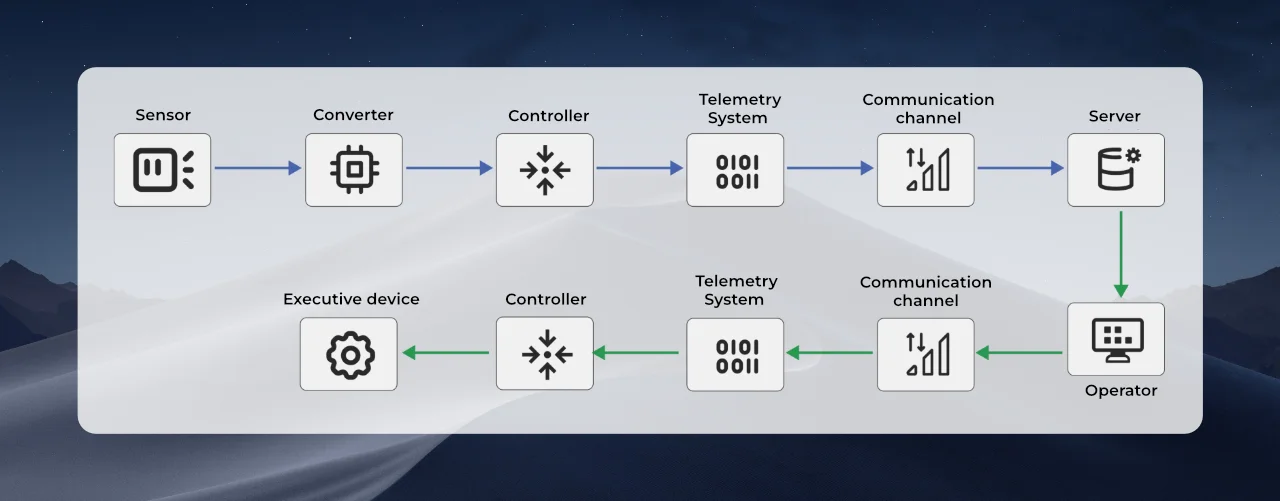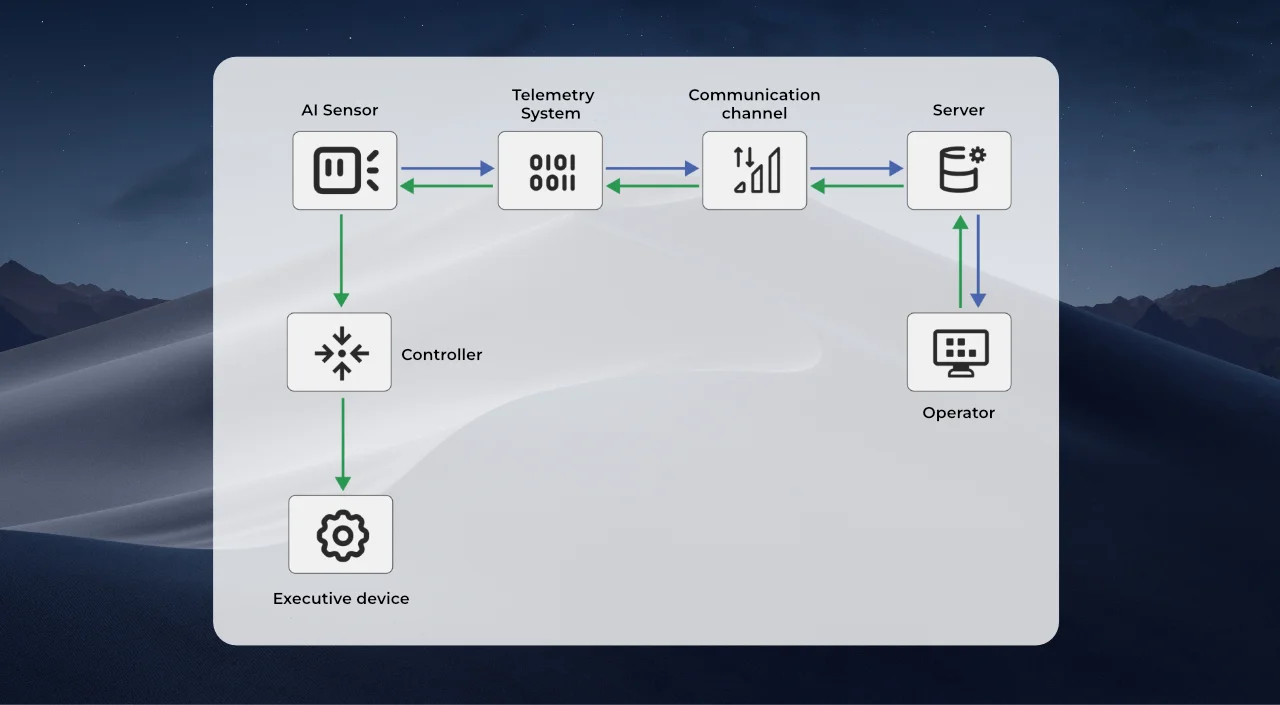Implementing AI in pressure and temperature sensors
General Description
The digital pressure and temperature sensor is a combination of primary pressure and temperature transmitters in a single housing.
Important
The sensor contains 2 direct measurement channels equipped with analog-to-digital converters with SPI digital interface and a digital channel for intelligent analysis of pressure and temperature values.
Intelligent analytics channel with the help of artificial intelligence software-hardware module integrated into the sensor allows to obtain analytical control over the change of physical quantities of pressure and temperature in time.
With this channel, the sensor can be trained on certain processes of the measured values occurring over time. In cases of sharp deviations of measured values from the previously trained behavior model, the sensor sends a hardware event (interrupt) through the analytics channel and generates a json sequence of deviation of measured values in time, the so-called “heat trace” or “gap”, allowing the upper level system to instantly (“on the fly”) perform an action in accordance with the laid algorithm.
Control Chains
The development of the specified sensor allowed to abandon the classical control chain and use direct/indirect process control and parallel event transmission to the server.


Direct control is also possible for certain executive devices:

Both channels of the intelligent pressure and temperature sensor operate independently and in parallel, which allows the sensor to be used in classical monitoring and control systems and in self-learning intelligent systems.
The digital channel of the sensor when working as part of telemetry systems allows remote training of the sensor to recognize anomalies in the technological process and supports the mode of rapid cloning of the AI algorithm of sensors to realize the tasks of rapid scaling of technologically identical processes.
The main difference of realization of control and management systems with the use of intelligent sensor in contrast to PID-regulation systems lies in the flexibility of sensor training to a certain technological process running in time, which gives a direct “hit” action on the event, while PID systems adjust the values of measured parameters with the help of the executive mechanism iteratively with the help of feedback.
Key Benefits
The main advantages of smart sensors are:
- Instant response speed to process changes in time up to 1 ms, up to 1000 times faster than existing systems.
- Reduces the total cost of a process monitoring and control system (up to 100 times) by eliminating the entire chain of devices.
- No need to develop complex mechanisms for control and management.
- Reducing the probability of failure and increasing the reliability of control and management systems by several times, by reducing the process chain of devices.